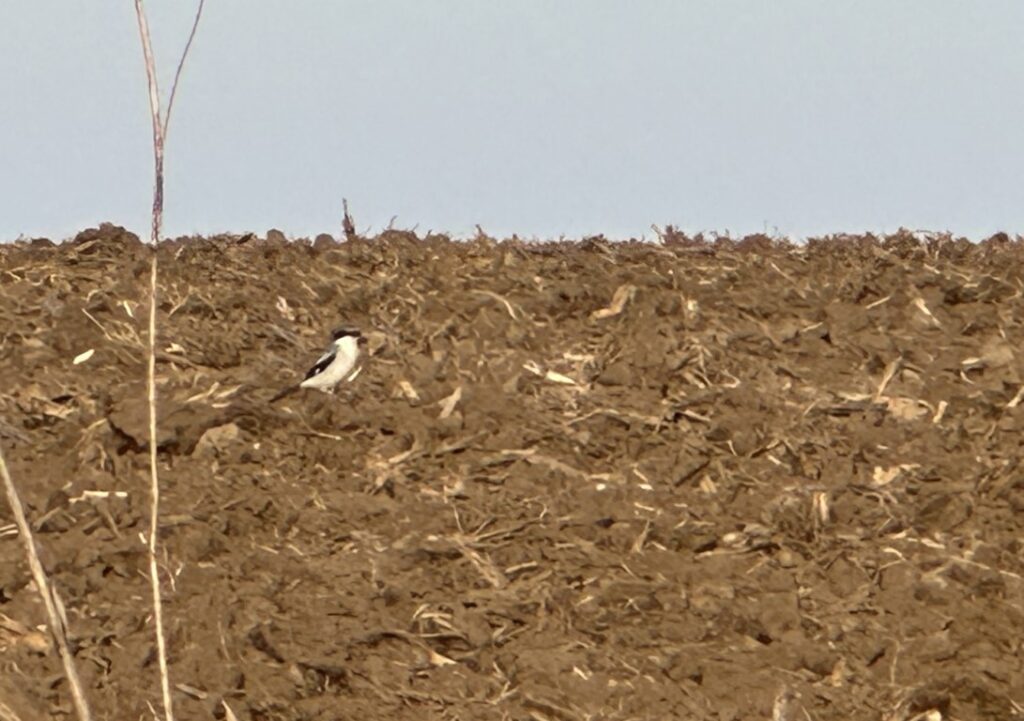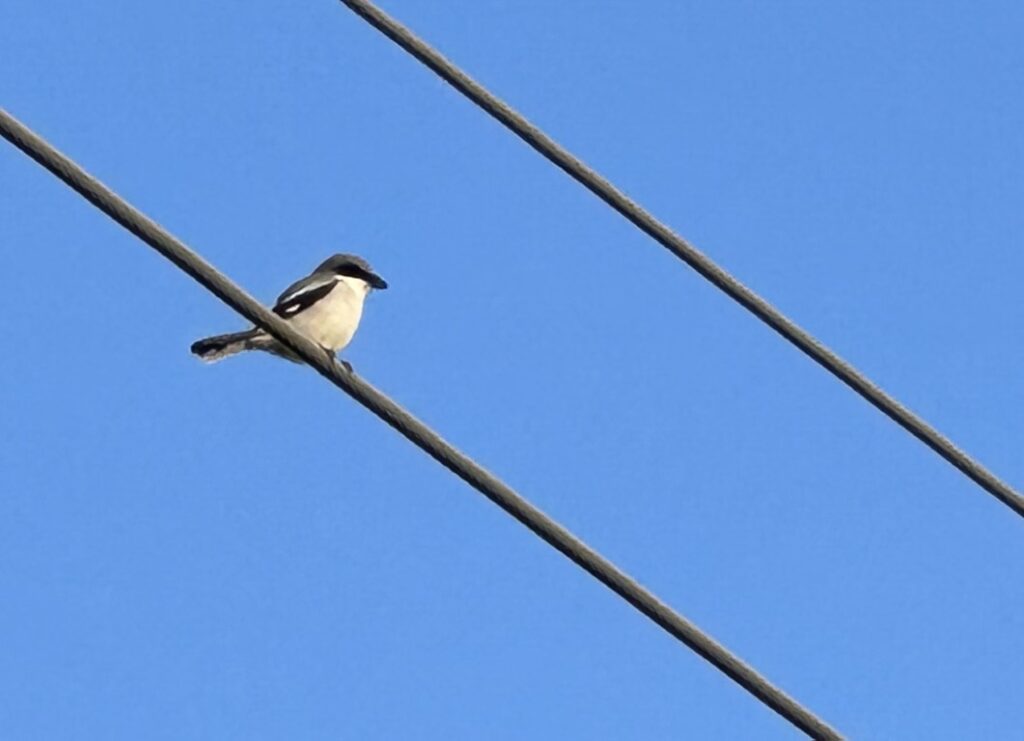At the beginning of our birding marathon this spring, my friend JL and I started following some birding Facebook groups that would give us alerts when an interesting bird showed up in our area. In late April while we were birdwatching in another county (wouldn’t you know it!), some people started posting excitedly about a Loggerhead Shrike being spotted just outside of Madison.
Loggerhead Shrikes are also called “butcher birds” because they impale their prey on sharp things like thorns or fence posts for easier eating. They also spike toxic prey like monarch butterflies and certain toads and then come back to eat them a few days later when the toxins have broken down.
I had never seen a Loggerhead Shrike before, and they’re uncommon enough in Wisconsin now that their sightings trigger an official rare bird alert.
We didn’t have enough time to try to find the bird on the day the alert came out, but we went out the next day in the evening. For whatever goofy reason, neither of us thought to bring binoculars or a camera along.
No birders had given any updates that day either, so we had no idea if the bird was even still around. The location was on a county road, but of course birds can move around anywhere, so we also weren’t even sure how to find it!
We drove about 15 miles out of the city and eventually turned onto a county road where birders had seen the shrike the previous day. I hadn’t even researched Loggerhead Shrike behavior enough to know where we should be looking (on the ground, in a shrub, out in the open, etc.). All of a sudden I saw some movement in a freshly-plowed field. There he was! Well that was easy!
JL pulled her car over to the side of the road so we could watch this funny little bird for a bit. That’s when he flew right above her car and sat on the wires—almost posing! It was much appreciated since all we had with us was phone cameras.
The Cornell Lab of Ornithology’s All About Birds website says: “Loggerhead,” a synonym for “blockhead,” refers to the unusually large size of this bird’s head in relation to its body.”
A Loggerhead Shrike can kill and carry an animal as massive as itself. It transports large prey in its feet and smaller victims in its beak.
Loggerhead Shrikes eat insects and other arthropods, amphibians, reptiles, small mammals, and birds; they also sometimes feed on roadkill and carrion. Their staple foods include agricultural pests such as grasshoppers, beetles and rodents. Insects generally dominate the Loggerhead Shrike’s diet during breeding season, while winter brings a greater reliance on vertebrate prey. These include lizards, snakes, frogs, turtles, sparrows, goldfinches, ground squirrels, voles, mice, and shrews, to name just a few.


